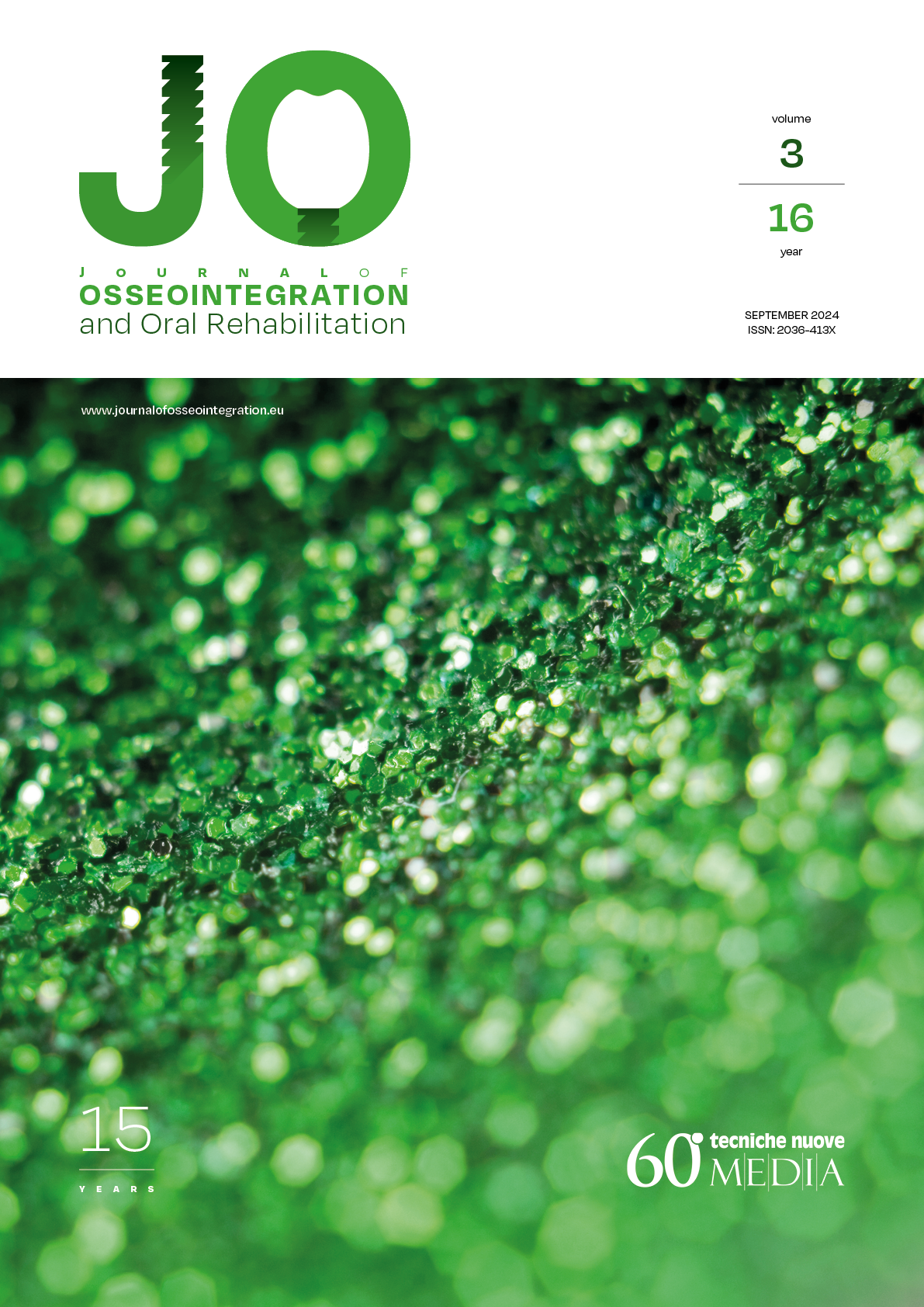Articles
Vol. 16 No. 3 (2024)
Comparative analysis of elemental composition between dental implants with different microgeometry using an energy-dispersive X-ray spectroscope
Publisher's note
All claims expressed in this article are solely those of the authors and do not necessarily represent those of their affiliated organizations, or those of the publisher, the editors and the reviewers. Any product that may be evaluated in this article or claim that may be made by its manufacturer is not guaranteed or endorsed by the publisher.
All claims expressed in this article are solely those of the authors and do not necessarily represent those of their affiliated organizations, or those of the publisher, the editors and the reviewers. Any product that may be evaluated in this article or claim that may be made by its manufacturer is not guaranteed or endorsed by the publisher.
Received: 24 January 2024
Accepted: 23 June 2024
Accepted: 23 June 2024
430
Views
257
Downloads












